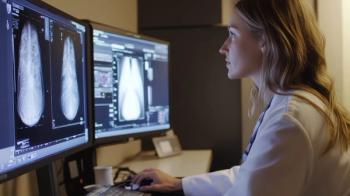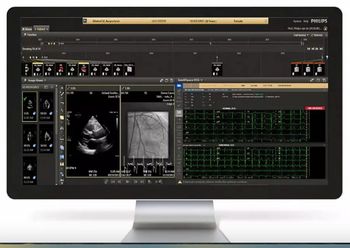
AHRA 2011: An Uncertain Future for Radiologists?
GRAPEVINE, TX - On the show "House," radiologists themselves almost never get screen time - a “sobering parallel” to the real world. That's because for radiologists, industry changes and emerging imaging resource trends are threatening some of their livelihood, according to Lawrence R. Muroff, president and CEO of Imaging Consultants.
GRAPEVINE, TX - If your average episode of "House" is any indication, radiologists are in trouble.
Each episode is chock full of CTs and MRs. Radiology plays a key role, noted Lawrence R. Muroff, MD, president and CEO of Imaging Consultants in Tampa, Fla., speaking at the AHRA annual conference this week.
But radiologists themselves almost never get screen time on the show - a “sobering parallel” to the real world, Muroff said. That's because for radiologists, industry changes and emerging imaging resource trends are threatening some of their livelihood, he said.
"Things are going to be far more difficult than they have been in the last 10 years," Muroff warned.
That's due, in part, to an influx of groups lining up to offer imaging services. Muroff predicted
Outsourcing through teleradiology has allowed a certain level of flexibility for radiology professionals. It has, however, distanced hospitals and medical offices from their radiology resources, Muroff said.
"Hospitals are becoming less attached, less protective of their radiologists," Muroff noted. "This is going to put tremendous pressure on radiologists."
Sending out for reads makes hospital officials less likely to recognize, or recommend, a familiar face. Such outsourcing, he said, "teaches hospital administrators that relationships don't matter. Anyone can do it, at any time."
And when anyone can do it, at any time, many will do so at a much lower price point.
Further, more RAs, RPAs, Pas, and RNs are rising to the occasion and performing imaging services, affording them a greater role in the radiology industry and, ultimately, a share of its profits. Doctors trying to maintain a certain income level may ultimately turn more toward non-physician professionals, which means less work for radiologists. It becomes more financially complicated, as CMS doesn't currently reimburse for RAs and RPAs, Muroff observed.
And as radiologists engage in growing turf wars with other health professionals providing imaging work, hospital administrators are putting greater demands on radiology groups. By 2015, hospitals will become more aggressive in trying to get radiologists to become employees, something Muroff advocates against.
Many radiologists, he noted, will be willing to do it. That's because typically, radiologists can be stubborn stock, resistant to change, said Muroff, himself a radiologist. When faced with the choice between adapting to a changing landscape or committing to a hospital's ranks, many radiologists might choose the latter.
Radiology will remain strong and steady for years to come, Muroff said. However, he added, those hard-headed radiologists have to start thinking outside of the box and consider alternative ways to utilize their services and maintain a steady income.
"The future of radiology is bright," Muroff predicted. "The future for radiologists is far less certain."
Newsletter
Stay at the forefront of radiology with the Diagnostic Imaging newsletter, delivering the latest news, clinical insights, and imaging advancements for today’s radiologists.

























